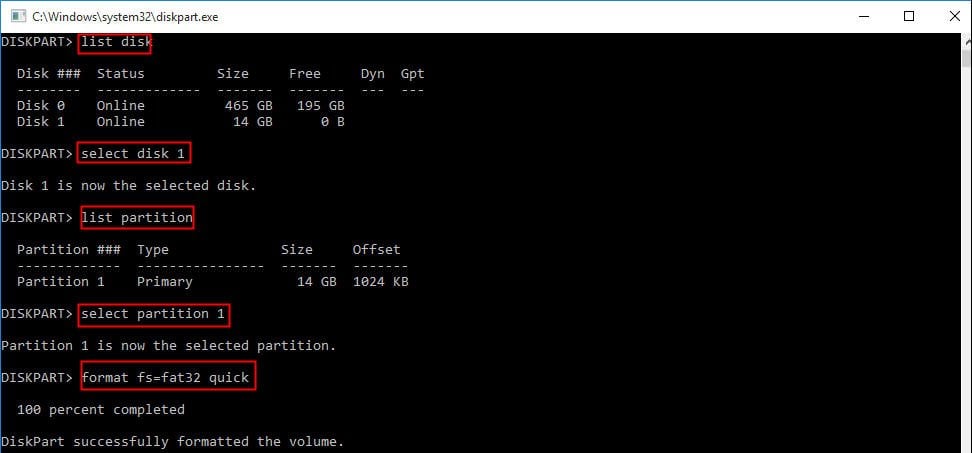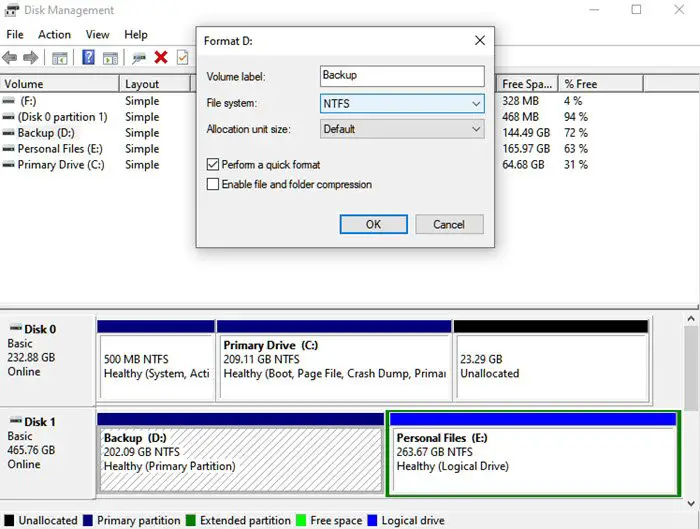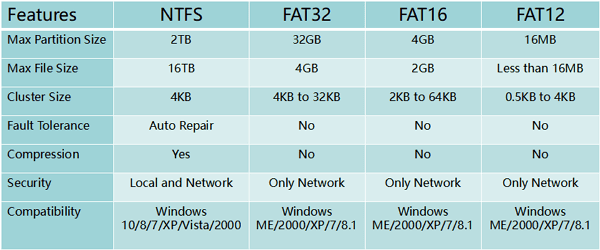

- What type of hard disk formatting creates fat archive#
- What type of hard disk formatting creates fat windows#
As well as the attribute file, this includes information about the modification, creation, and access date and times. Under HPFS, directory entries hold more information than under FAT. In addition, the unit of allocation is changed from clusters to physical sectors (512 bytes), which reduces lost disk space. HPFS also allows a file to be composed of "data" and special attributes to allow for increased flexibility in terms of supporting other naming conventions and security. Filenames are extended to up to 254 double byte characters. HPFS maintains the directory organization of FAT, but adds automatic sorting of the directory based on filenames. Additionally, it was necessary for a new file system to extend the naming system, organization, and security for the growing demands of the network server market. The HPFS file system was first introduced with OS/2 1.2 to allow for greater access to the larger hard drives that were then appearing on the market.
What type of hard disk formatting creates fat windows#
Microsoft Windows NT Server 4.0 Resource Kit "Resource Guide," Chapter 3, section titled "Which File System to Use on Which Volumes" It is not possible to set permissions on files that are FAT partitions.įAT partitions are limited in size to a maximum of 4 Gigabytes (GB) under Windows NT and 2 GB in MS-DOS.įor further discussion of other disadvantages of FAT, see the following: This is because as the size of the volume increases, performance with FAT will quickly decrease. Preferably, when using drives or partitions of over 200 MB the FAT file system should not be used. Windows NT Server 4.0 Resource Kit "Resource Guide," Chapter 3, section titled "Which File System to Use on Which Volumes"

Windows NT Workstation 4.0 Resource Kit, Chapter 18, "Choosing a File System" Windows NT Server "Concepts and Planning Guide," Chapter 5, section titled "Choosing a File System" For further discussion of FAT advantages, see the following: The FAT file system is best for drives and/or partitions under approximately 200 MB, because FAT starts out with very little overhead. However, if the file was located on a FAT partition, and the system is restarted under MS-DOS, the file can be undeleted. Undelete utilities try to directly access the hardware, which cannot be done under Windows NT. It is not possible to perform an undelete under Windows NT on any of the supported file systems. The name cannot contain any spaces.ĬON, AUX, COM1, COM2, COM3, COM4, LPT1, LPT2, LPT3, PRN, NULĪll characters will be converted to uppercase. If any of these characters are used, unexpected results may occur. The name must start with either a letter or number and can contain any characters except for the following: The name of a file or directory can be up to eight characters long, then a period (.) separator, and up to a three character extension. FAT naming conventionįAT uses the traditional 8.3 file naming convention and all filenames must be created with the ASCII character set.
What type of hard disk formatting creates fat archive#
In addition, FAT supports only read-only, hidden, system, and archive file attributes. There is no organization to the FAT directory structure, and files are given the first open location on the drive. It is time consuming because the disk read heads must be repositioned to the drive's logical track zero each time the FAT table is updated. If the FAT table is not regularly updated, it can lead to data loss.

Updating the FAT table is very important as well as time consuming. This entry in the FAT table either indicates that this is the last cluster of the file, or points to the next cluster.

When a file is created, an entry is created in the directory and the first cluster number containing data is established. In addition, the FAT tables and the root directory must be stored in a fixed location so that the system's boot files can be correctly located.Ī disk formatted with FAT is allocated in clusters, whose size is determined by the size of the volume. To protect the volume, two copies of the FAT are kept in case one becomes damaged. The FAT file system is characterized by the file allocation table (FAT), which is really a table that resides at the very "top" of the volume. FAT overviewįAT is by far the most simplistic of the file systems supported by Windows NT. Also, support for the FAT32 file system became available in Windows 98/Windows 95 OSR2 and Windows 2000. Windows NT 4.0 does not support and cannot access HPFS partitions. HPFS is only supported under Windows NT versions 3.1, 3.5, and 3.51.


 0 kommentar(er)
0 kommentar(er)
